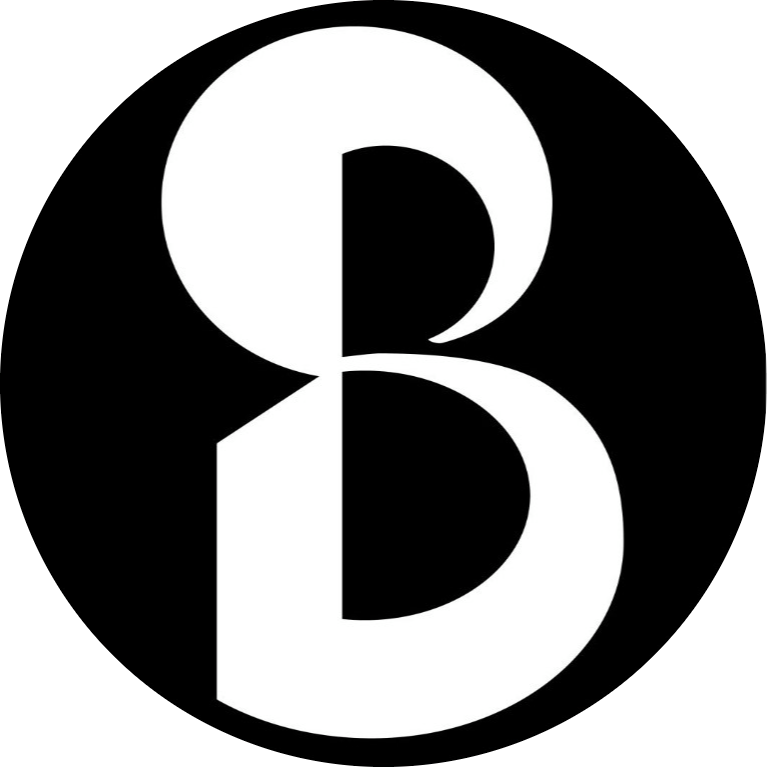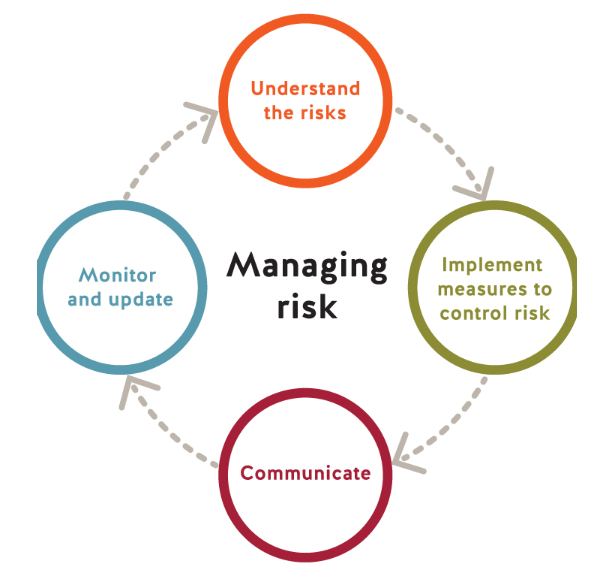
Managing Risks
Managing Risks in the Workplace
Managing risk in the workplace involves thinking about what might cause harm to workers, and determining whether we are taking reasonable steps to prevent that harm from happening.
We do this by following 4 steps:
Understanding the risks
Implementing Measures to control risks
Communicationg
Monitoring and Updating
Managing risk is everyone's responsibility.
Read below to learn how you can contribute to a safer workplace.
-
This involves accurately identifying potential hazards in your workplace. You're looking for all the things and situations that could possibly harm workers or other people that may be on site.
Identifying hazards starts with a workplace inspection.This includes walking around your site:
Observing how work tasks are being performed
Assessing the equipment workers are using, and considering how that equipment is being used
Analyzing the design and layout of the work areas
This is a proactive process. Ask yourself, what is it about the activities, processes, or substances used that could injure workers or harm their health?
Hazards generally arise from the following aspects of work:
The physical work environment
Equipment, materials, and substances used at the workplace
Work tasks and how they are performed
Work design and management
When you work in a place every day, it's easy to overlook some hazards. Here are some tips to help you identify risks in your workplace:
For equipment, check manufacturer instructions or safety data sheets. Think about long-term health hazards such as high levels of noise.
Consider non-routine operations, such as maintenance, cleaning operations, or changes in production cycles.
For chemicals, check manufacturer instructions or safety data sheets. Remember to think about long-term health hazards such as exposure to harmful substances.
Do an overall review of your incident and worker health records, as well as records of near misses or worker complaints. These can help identify less obvious hazards. People tend to deal with incidents as they occur, but viewing all that has occurred over time can alert you to a pattern and help you identify a hazard that may be systemic. If you're a large employer, our Employer Health and Safety Planning Tool Kit may help.
Consult with workers about any health and safety issues they've encountered in their work. It is important to keep lines of communication open with your workers, as they can likely identify risks to both workers and production. Survey them anonymously, asking open-ended questions. You may even choose to recognize workers who identify hazards in advance, since this helps business in the long run.
Keep up with the information about hazards and risks relevant to your specific industry or type of work. Consult with industry associations, manufacturers, and suppliers — all of which can provide you with valuable information. Also check out our Industry health and safety data, which shows detailed data for any industry.
Once you have a documented list of hazards, you're ready to begin assessing and controlling the risks.
-
The greatest risk should be addressed first. If you cannot eliminate a risk, you’ll need to implement control measures to minimize it. The hierarchy of controls can help you select and implement more effective measures to control risks.
The hierarchy of controls
When considering how to reduce the risk, there's a certain order you should follow. This is called the hierarchy of controls. It's important to follow the hierarchy, as shown below, rather than start with the easiest control measures.
Note that while the controls are listed in order of effectiveness, all four types of controls should be considered. They often work best in combination. For example, first responders cannot eliminate risks by choosing not to enter a burning building, but they can use engineering controls, administrative controls, and personal protective equipment and clothing to minimize the risks when they enter that building.
Elimination or substitution
Eliminating the hazard completely is always the first choice. Substitution involves replacing the material or process with a less hazardous one.
When considering these options, ask yourself:
Can I find safer ways to perform the task? For example, if falling is a hazard, eliminate the risk by storing stock at lower heights so workers don't have to climb ladders to reach the goods.
Can I use something less harmful? For example, if chemical-heavy industrial cleaners are a hazard, consider substituting cleaners made with vinegar, salt, borax, or baking soda. Just make sure the substitutions don't create new hazards.
Engineering controls
If you can't eliminate the hazards or substitute safer alternatives, engineering controls are the next best options. These involve using work equipment or other means to prevent workers from being exposed to a hazard. Engineering controls are physical changes to the workplace and may include equipment guarding, guardrails, traffic control lanes and barriers between vehicles and pedestrians, and many other options.
For example, while working at heights cannot be avoided in construction, guardrails can be installed to prevent falls from happening. Guardrails are an example of an engineering control.
Administrative controls
Administrative controls involve identifying and implementing safe work procedures so your workers can perform their job duties safely. The findings of your risk assessment will form the basis of these safe work procedures.
Examples of administrative controls include implementing person-check procedures and prohibiting the use of mobile phones while workers are driving.
Personal protective equipment and clothing
Using personal protective equipment (PPE) is another important control to protect workers.
For example, while working with toxic chemicals may be necessary in certain workplaces such as laboratories, the use of PPE such as protective eyewear and gloves will help to reduce the exposure risk.
Control measures don’t have to be costly, but the potential return on investment is huge. For example, placing a mirror on a dangerous, blind corner of your worksite can help prevent vehicle incidents. Considering how serious a resulting injury might be, this is a low-cost precaution.
-
Everyone in the company must be aware of the risk management program. The owner, managers, supervisors, and workers are provided this orientation and training on how to identify hazards and what to do to control the risks.
Workers and contractors can use the daily inspection form, or the incident reporting form to communicate with management about any identified risks.
-
Continuous improvement is the key to our success at Stillbuilt Solutions. Through regularly scheduled and intermittent workplace inspections, safety reports, and investigations, we will monitor new and known risks in the workplace.
Updates to our risk management plan are dynamic and ongoing. We will communicate risks and mitigation plans through documentation on this site, through daily toolbox meetings, and through formal and informal conversations. Safety is part of our culture, and safety conversations are a regular and effective part of our risk mitigation strategy.


